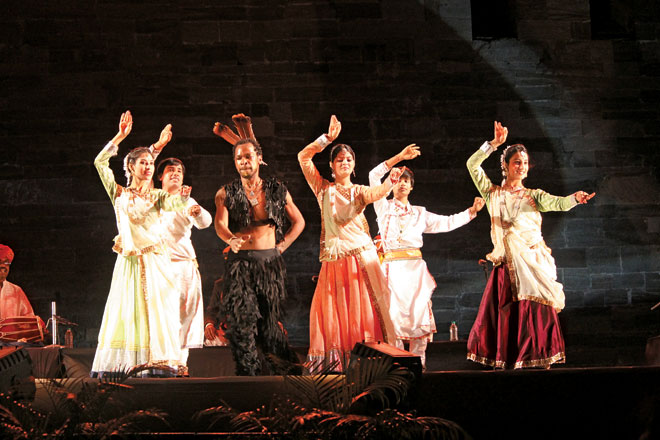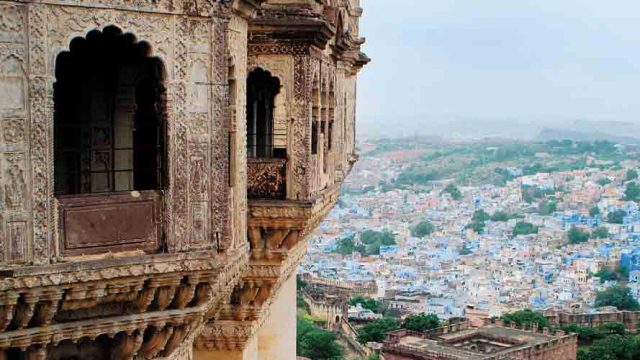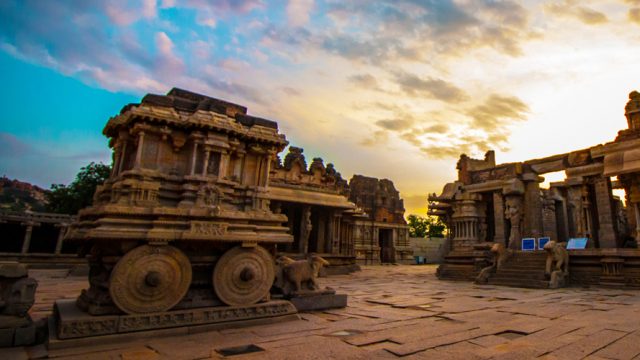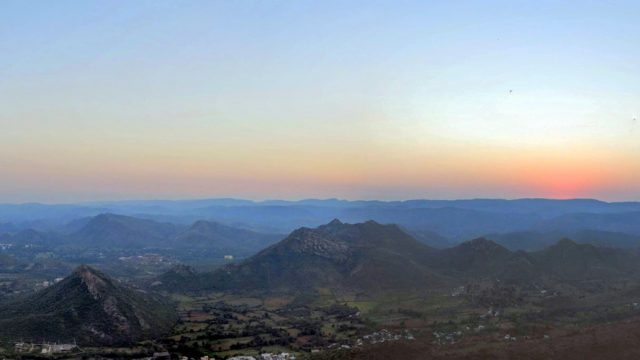There was a nip in the air as we lounged on the beautiful lawns
It was an invigorating start to a festival that is now in its ninth year. It is hosted by the Mehrangarh Museum Trust, an initiative of the royal family of Jodhpur-Marwar. The line-up that weekend included about 120 artistes from India, Spain, Afghanistan, Morocco, Greece and even French Guiana.
These performers would have been scintillating even set against a drab white sheet but what made the festival experience utterly special was the backdrop against which the recitals were played out: the awe-inspiring Mehrangarh Fort… the large courtyard of its Zenana Deodi, the snug gardens of Chokelao and the serene lake and architecture of Jaswant Thada.I sipped my tea and looked around. Mehrangarh towered on a rocky outcrop less than a kilometre away and in the distance was the magnificent Umaid Bhawan. Nearer, scattered cenotaphs of royalty, and further below, the sprawled out, blue-tinted city of Jodhpur. It made me sigh.

The morning brought a concert by Uzbek songstress Yulduz Turdieva, and then came a qawalli group called Fanna Fi Allah, that caused quite a bit of confusion in me as a listener. The qawalli is very much a home-grown genre, an innovation by the wonderful 13th-century musician-poet Amir Khusrau, and here, disconcertingly, was an all-white troupe albeit with Sufi hearts… some of them do have connections of the heart and of the blood with the subcontinent but it remains that they sing Khusrau—his Farsi, his Braj, his Hindvi—with a western twang and a foreign aesthetic that hasn’t grafted too well.
The afternoon brought a heart-warming delight. Children from Langa-Manganiyar communities presented their traditional fare with much skill and greater aplomb, with the presence of Gaj Singh of Jodhpur-Marwar only adding lustre to their performance.
We shifted venue as evening approached—to the scenic lakeside at Jaswant Thada. Earlier that day, I had the opportunity to take a walk around the admirable Rao Jodha Desert Rock Park. The 175-acre park adjoins the fort and is situated on an outcrop of volcanic rhyolite (this is so unusual it has been designated a National Geological Monument). The trail is a showcase of the landscape as well as the immense work put in here to restore the natural eco- logy. We looked at the birds but it soon became obvious that the star here was the flora. I peered down in fascination at a succulent that had put out clusters of red fleshy flowers. I had stumbled upon ‘thhor’—a plant that is emblematic of the Thar Desert, and a miniature ecological niche by itself. As I looked around, columns upon columns of igneous rock (called ‘welded tuff’) bore their history as tellingly as the fort did.

In the evening, however, the lake and the environs displayed a more poetic frame of mind. As the sun sank, Deveshi Sehgal sang robustly about oneness to much appreciation and applause. The night venue was the imposing Zenana Deodi at the fort… and the dance ensembles fully lived up to the standards the aged fort walls seemed to demand of them.
Day 2 began with a folk recital from Rajasthan, which, I must confess, made me go slack-jawed. A trademark of the Kamar community, the Tera Tali has an ensemble of seated women (there were four here) who wear thirteen ‘manjiras’ or cymbals about their person. A male singer leads the song, and the women join in, swirling and clanging the manjiras in an intricate, fascinating upper body dance. Just to make it edgy, they sometimes hold a sword clenched between their teeth… in a masterly demonstration of skill. They sing of Meera and Radha and of their guru, the 14th-century Pir Baba Ramdeo.
That performance left me feeling so steeped in the ways of Rajasthan that the next thing on my crave-list was a Rajasthani breakfast. I made my way into town to a Mishtan Bhandhar—clearly I couldn’t leave Jodhpur without having pyaaz kachori, but why leave out the khaman dhokla? And the rabri ghevar (my very first time) was a revelation. How had I lived so long without tasting this? That afternoon, I snuck out between concerts for some sinful makhaniya lassi at Mishrilal and had a shot at the mawa kachori while I was at it. What was I thinking when I settled so far down south?

I was glad to get the food out of the way, however, before I settled down to a fabulous recital by ‘Char Yaar’—a group led by the erudite Dr Madan Gopal Singh. “I have no training in music,” he told me when I met him afterwards, “but for poetry, I’ll travel anywhere!” His love of poetry was palpable… such a rich fount of knowledge! He sang Tagore’s translation of Guru Nanak’s ‘Gagan mein thaal’, a song called ‘Shalu’ about the very tapestry of India and gave the fairly informed audience a peek into the original ‘char yaar’—the four revered Sufi saints of the subcontinent. My predominant emotion was relief when the festival’s artistic director, Alain Weber, announced an anthology of poetry edited by Dr Madan Gopal that will be out next year. I can’t wait.
The evening wound up with the classical and the contemporary—Ustad Amjad Ali Khan and sons on the one hand and the funky Maati Baani on the other, who managed to convert the stately Zenana Deodi into a vibrant nightclub. Spiritual music, it would seem, was alive, and yes, it did kick!
Mehrangarh Museum Trust
World Sacred Spirit Festival
Leave a Reply
You must be logged in to post a comment.





